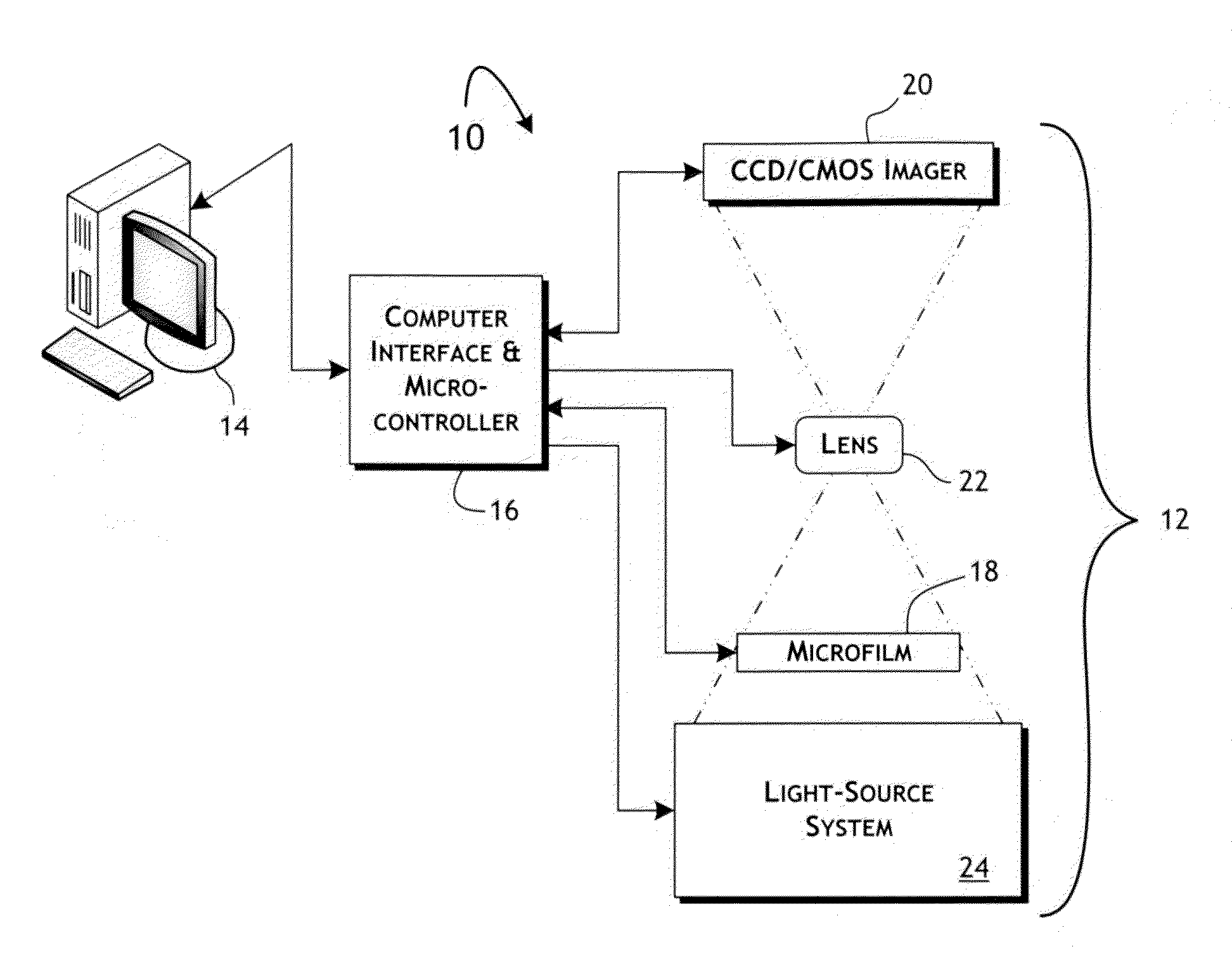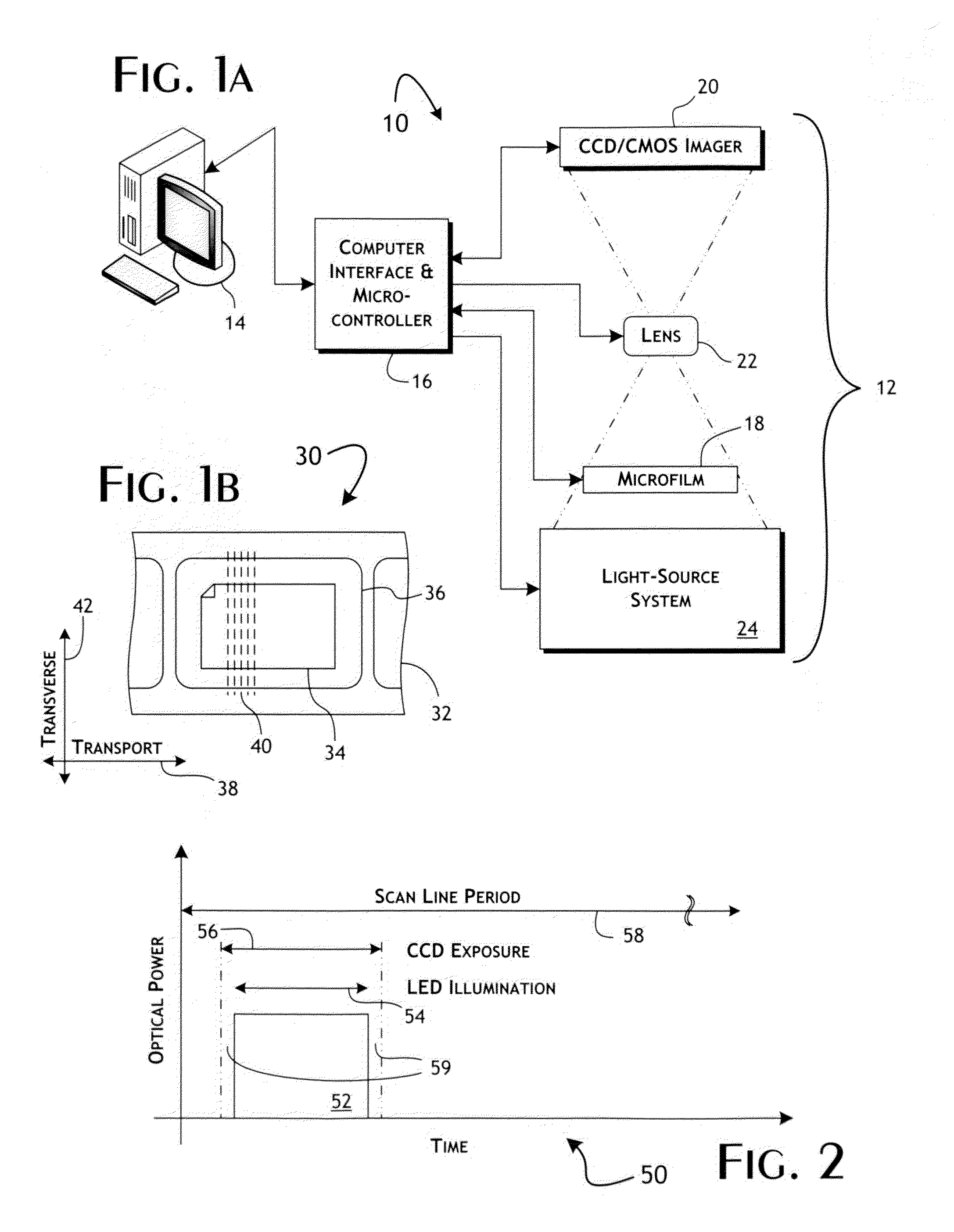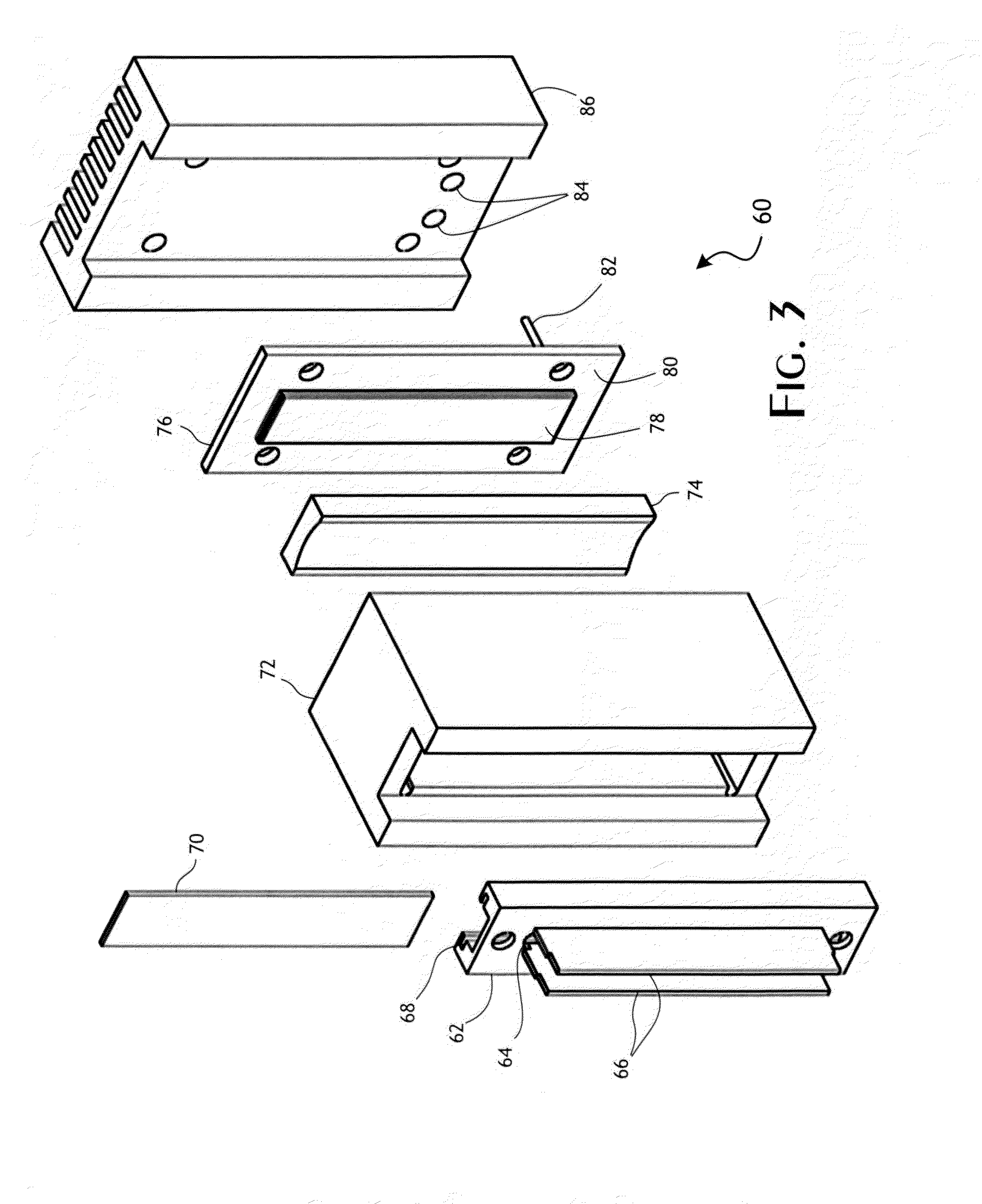High intensity, strobed led micro-strip for microfilm imaging system and methods
a microfilm imaging and led microstrip technology, applied in the field of microfilm imaging systems, can solve the problems of limiting the exposure illumination required for full speed operation, relatively expensive broadband color correction lenses, and low efficiency of camera speed, and achieves high efficiency, no meaningful ir emissions, and high illumination intensity. high uniform
- Summary
- Abstract
- Description
- Claims
- Application Information
AI Technical Summary
Benefits of technology
Problems solved by technology
Method used
Image
Examples
Embodiment Construction
[0029]The present invention provides a high-intensity, strobed light source appropriate for use in high-speed scan imaging systems, such as the continuous scan microfilm imaging system 10 shown in FIG. 1A. The imaging system 10 preferably includes an optomechanical imaging system 12, an imaging system management computer 14, and a microprocessor-based controller 16 suitable for real-time control applications. The imaging system 12 preferably includes a continuous microfilm media transport system 18, a line scan-type CCD or CMOS imaging camera, or imager, and objective lens 22. A preferred mechanical system configuration, including feedback managed speed controller, is described in High-Speed Continuous Linear Film Transport System, U.S. Pat. No. 7,093,939 issued Aug. 22, 2006 to Breish et al., and which is hereby incorporated by reference. The light source 24 of the present invention is positioned to project a high-intensity light beam through the microfilm media to the imager 20, s...
PUM
 Login to View More
Login to View More Abstract
Description
Claims
Application Information
 Login to View More
Login to View More - R&D
- Intellectual Property
- Life Sciences
- Materials
- Tech Scout
- Unparalleled Data Quality
- Higher Quality Content
- 60% Fewer Hallucinations
Browse by: Latest US Patents, China's latest patents, Technical Efficacy Thesaurus, Application Domain, Technology Topic, Popular Technical Reports.
© 2025 PatSnap. All rights reserved.Legal|Privacy policy|Modern Slavery Act Transparency Statement|Sitemap|About US| Contact US: help@patsnap.com



